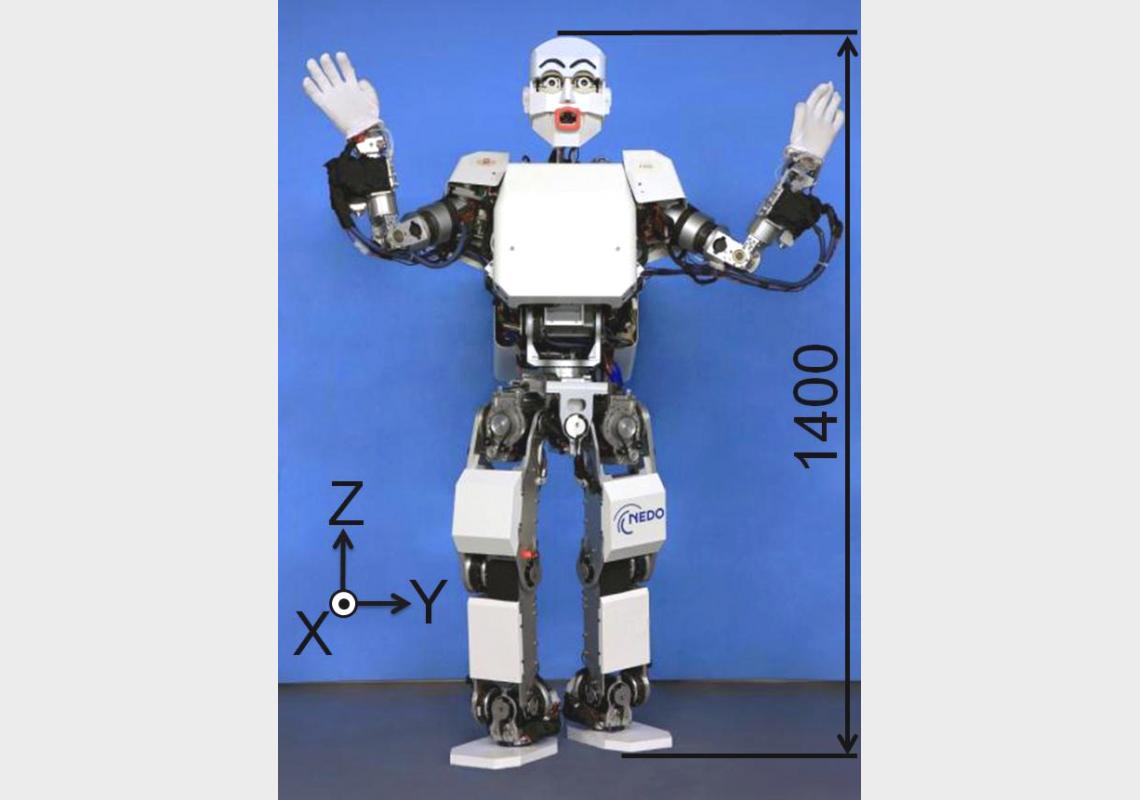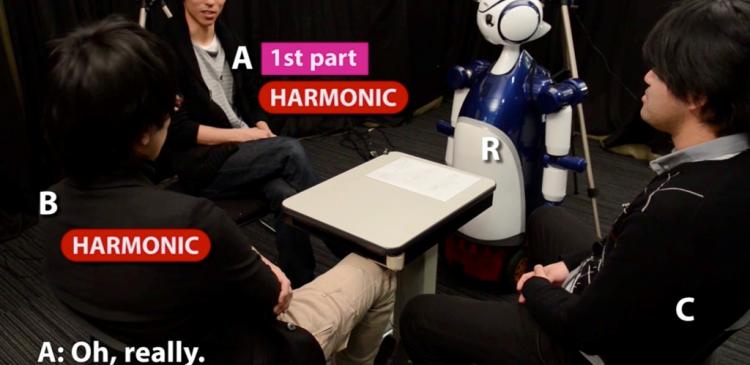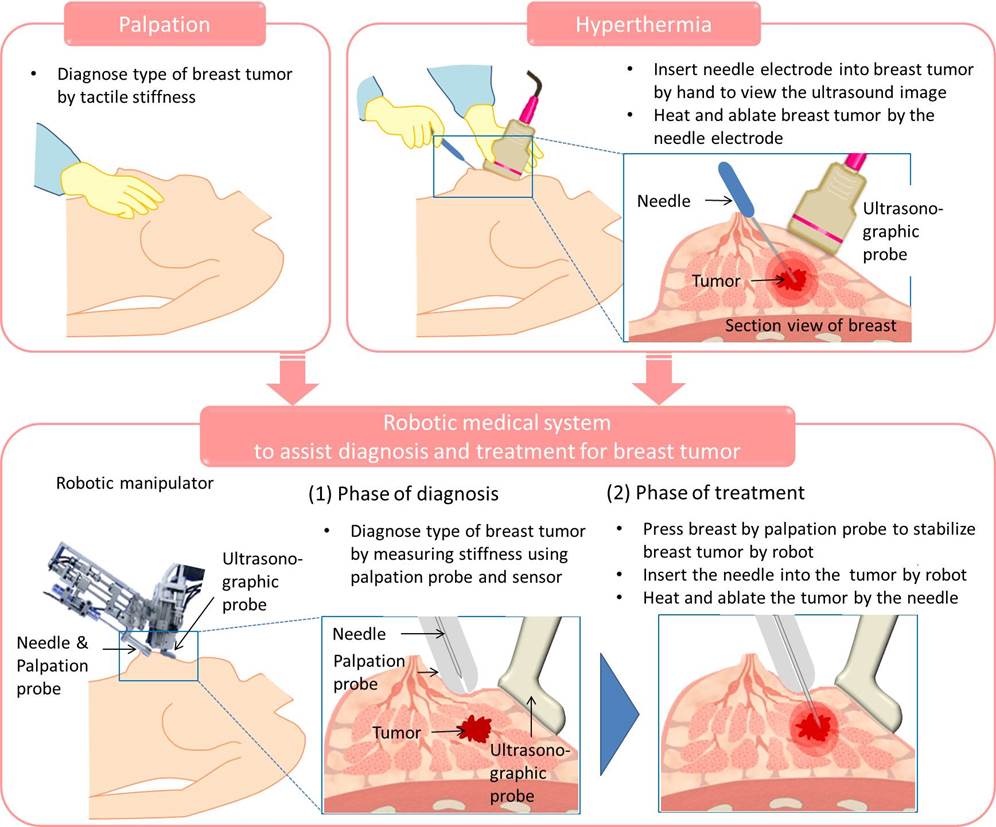KOBIAN has 7 facial expressions of happiness, anger, surprise, sadness, fear, dislike and normal status.
Waseda University is promoting research that can contribute to the realization of world peace and human happiness. In order to construct a framework of an “international research university,” the university disseminates information on these activities worldwide and feeds the results back into human society.
Above all, through its robot research that has developed some of the world’s most advanced technologies on a daily basis for more than four decades, the university has gained attention as an international research center which is expected to create new culture and industry around its robot technology.
Here is an overview of some of Waseda's robots
TWENDY-ONE
Smoothly supporting the lives of the elderly with skillful humanlike hands and arms
Due to the low birth rate and aging population, there is an increasing need for nursing care robots to support the daily lives of the elderly. Because of this, robots are required that can handle variously shaped items around the home such as household appliances, plates, and utensils, just as humans do. TWENDY-ONE, a robot developed at the Sugano Laboratory, is equipped with compliant joint function employing springs in its arms and has fingers with adjustable pressure, enabling it to handle soft or complex shaped objects in the same way that people do. It provides help with housework and nursing care, such as helping someone to get out of bed into a wheelchair, opening a refrigerator and taking out food, or baking bread.
Safety is an important factor in nursing care robots so that they should not hurt the people even if the robots have contact and collision with them accidentally. TWENDY-ONE can follow the human motion by having a contact detection function all over its body and advanced sensing capability. The aim now is to turn this robot, the fruit of Waseda’s technology, into a commercial product within a few years.
Sugano Laboratory
http://www.sugano.mech.waseda.ac.jp/
WABIAN-2 and KOBIAN
Latest bipedal walking robot that can show various emotions
The latest model of bipedal walking robot following on from WABOT is WABIAN-2, developed at the Takanishi Laboratory. Adopting a mechanism that mimics the movements of pelvis, WABIAN-2 walks like a human being and can be used as a body movement simulator for developing assistive technologies.
KOBIAN, a combination of a WABIAN-2 body and an upper body that expresses feelings, is another robot that uses its whole body to display an array of emotions. By moving its eyelids, eyelashes and lips, opening its mouth in a circle, opening its arms, and making a crying gesture with its head down, it has seven facial expressions of happiness, anger, surprise, sadness, fear, dislike, and normal status. The day may come when robots such as this, with its humanlike movements and ability to show feelings, can comfort people in nursing homes and so on.
Takanishi Laboratory
http://www.takanishi.mech.waseda.ac.jp/top/research/index.htm
SCHEMA
Communication robot that can converse with many people
The Perceptual Computing Laboratory led by Professor Tetsunori Kobayashi is researching a robot that can converse naturally with people using voice recognition, facial expression recognition, machine learning, conversation building methods, and so on. The culmination of this work is SCHEMA. Whereas other robots to date have been designed to conduct one-to-one conversations, SCHEMA can communicate naturally in conversation with more than one person. Its pretty face also makes it popular with children.
http://www.youtube.com/watch?v=oanbOmNida0
http://www.youtube.com/watch?v=rYGLg3OUP_k
Perceptual Computing Laboratory
http://www.pcl.cs.waseda.ac.jp/
TWIns
Support for breast cancer treatment with robots’ intelligent, accurate and precise movements
Waseda University researches and develops not only humanoid robots but also more practical things such as surgical assistant robotic systems and walking support systems for the elderly and disabled. At TWIns, a joint biomedical science institute with Tokyo Women's Medical University, research is underway to utilize the intelligent, accurate and precise movements of robots in medical treatment.
An example is the breast cancer surgical assistant robot developed by the Fujie Laboratory in cooperation with Kyushu University and Tohoku University. One method of treating liver cancer is radio wave cautery, in which cancer cells are cauterized by radio waves emitted from the tip of an inserted needle, and its application as a form of minimally invasive surgery in breast cancer is being studied. A breast cancer surgical assistant robot will be able to locate and quantify cancer cells within an area and accurately control a needle that pierces and cauterizes those cells. There are hopes for this to become a safe medical procedure that does not depend on the experience and skill of a doctor.
Recently, Fujie Laboratory is developing a robotic system for assisting breast cancer diagnosis by applying the technology to locate and quantify cancer cells within an area. As an experienced doctor diagnoses not only tumor’s location and region but type of breast tumor by palpation, the robot presses the breast, calculates stiffness values from the state of breast deformation and provides information to determine a type of breast tumor. Fujie Laboratory is working towards developing a robotic system to assist from minimally-invasive diagnosis to treatment for breast cancer.
Fujie Laboratory
http://www.fujie.mech.waseda.ac.jp/
Yo Kobayashi: Robotic assistance in breast cancer treatment - Accurate and safe non-incision surgery
http://www.yomiuri.co.jp/adv/wol/dy/opinion/science_130624.htm
BACKGROUND
International center of robotics with a 40-year history
Robotics research at Waseda University began in 1970 with WABOT (an abbreviation of Waseda Robot), a cross-disciplinary project led by Professor Ichiro Kato, who is known as the father of robot development. In 1973 his team completed WABOT-1, a bipedal humanoid robot able to conduct simple conversation. In 1984 they announced WABOT-2, which could read a musical score and play an electronic organ with both hands and both feet.
“Rather than a robot for performing fixed tasks in a factory and so on, what we aimed for was a robot that could coexist with human beings and make our lives more convenient and enjoyable.” These are the words of Professor Masakatsu G. Fujie, a leading presence in Waseda University’s current robotics research who studied under Professor Kato.
Robotics research requires knowledge of not only mechanical engineering but also a range of subjects such as information engineering, materials engineering, medicine and psychology. A feature of Waseda University is the cross-disciplinary research done jointly by researchers from various fields. In 2000, the Humanoid Robotics Institute was established specializing in humanoid robots. In 2001, the WABOT-HOUSE Laboratory was also established to conduct robotics research including people’s living environment, in partnership with the fields of architecture and communications.
From 2003, a 21st Century COE Program “The innovative research on symbiosis technologies for human and robots in the elderly dominated society” was launched and joint research conducted with the Health Sciences and Engineering Institute, Advanced Medical Engineering Institute, and Mobility Institute. From 2008, we moved toward establishing a hub for international research in the form of the Global Robot Academia adopted under the Global COE Program. We have also conducted lively exchanges of personnel and joint research with overseas robotics research institutes such as South Korea’s Center for Intelligent Robotics and Italy’s Sant'Anna School of Advanced Studies.
According to Professor Fujie: “Robotics research involves the development of technologies in various engineering fields and the deepening of our understanding of people. We want to establish our research to date as a world-leading system of robotics studies that will become the global standard.”
Ahead of Waseda University’s 150th anniversary in 2032, it is bringing together students from around the world, conducting cutting edge research that contributes to international society, and producing graduates who become successful global leaders. Waseda Vision 150 aims to make these contributions. Robotics research is right at the forefront of this plan.
SOME INSIGHTS FROM THE RESEARCHERS
■ Being able to exchange ideas with a range of researchers in biology etc.
- Xiaowei Lu, Doctoral Program, Department of Modern Mechanical Engineering, Graduate School of Creative Science and Engineering
At present, I am involved in research into robots assisting radio wave cautery therapy for breast cancer. At Waseda University I come across advanced technologies and gain wide experience. At the Center for Advanced Biomedical Sciences, there are life science and biology laboratories where researchers from a wide range of fields can exchange ideas. In robotics research, we focus on the usefulness of robots to human beings and are always asking ourselves, “Will this robot really help people?” My dream is for a robot that I have developed to be used by people around the world.
■ Being able to do research in an international environment
- Przemyslaw Kryczka, Doctoral Program, Department of Integrative Bioscience and Biomedical Engineering, Graduate School of Advanced Science and Engineering
I wanted to specialize in robotics in Japan and so I entered the Takanishi Laboratory, the most famous institute in the world for research into bipedal robots. For humanoid robots to be of use to people, the challenge is to make them able to walk stably in people’s actual living environment. I am developing a control system so that when a robot totters and becomes unstable while walking, it can quickly adjust its posture and movement and return to a stable gait. I come from Poland, and there are many other foreign students in Waseda’s robotics research laboratories so I can do my research in an international environment.





